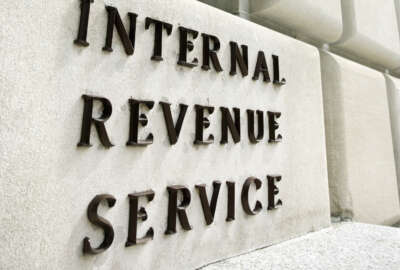

The agency’s years-long investment in robotic process automation reached an inflection point last year, when the IRS used a bot well-established in handling one...
The IRS is doubling down on its investment in automation tools to handle tasks common to thousands of contracts.
The agency’s years-long investment in robotic process automation reached an inflection point in 2020, when the IRS used a bot well-established in handling one task — correcting data errors in the Federal Procurement Data System-Next Generation — to take on a new job under a tight deadline.
Chief Procurement Officer Shanna Webbers said her decision to approve the bot for this work saved the agency about a year of manual work, freeing up contracting officials to better support the agency’s needs during the COVID-19 pandemic.
While the IRS procurement office tested the bot for its new purpose before putting it to work, Webbers said members of her team expressed “a lot of angst and opposition” using this bot for a new purpose without more vetting. She said her decision to greenlight the bot for this purpose, in order to meet a tight deadline, was a matter of “intelligent risk-taking.”
“Each of those concerns and reasons had merit and they deserved consideration when assessing our options. And even though I was convinced that the bot was our best path to success, I continue to probe my staff with more questions really to pull out and highlight the various risks that potentially we would face by using this unproven approach,” Webbers said in an interview. “When you’re in a situation like that, where you’re under the gun, I think that also forces you somewhat to think out of the box, to try to come up with a better solution or a better situation, of how do we actually work our way out of that particular problem.”
The time crunch at the IRS stemmed from provision in the 2019 National Defense Authorization Act barring agencies from using telecommunications equipment from a handful of Chinese companies.
That language, included in Section 889 of the NDAA, required agencies to review their portfolio of contracts and guarantee compliance.
Last August, in the fourth quarter of fiscal 2020, Webbers said her team was “laser-focused” on finalizing year-end spending, but realized that the agency had not yet finalized its plan for implementing Section 889.
This realization meant the IRS procurement office had nine days to finalize its plan. Webbers said this requirement raised all sorts of questions, such as figuring out how many contracts would require modification and how the agency would manage exception requests.
The IRS at the time had about 2,700 active contracts. It would take about two hours to complete a single contract modification, input the data into the Federal Data Procurement System and upload it to the contract file repository.
Webbers said her office narrowed down the scope of the work using the product service code, which flagged 1,466 contracts that the agency needed to modify to comply with the Section 889 requirements.
Nevertheless, that left the agency with more than a full year of work hours needed in nine days.
Faced with this time crunch, IRS took a bot that had been used for only one purpose to complete contract modifications in bulk.
To minimize the risk of running the bot, the IRS completed the modifications outside its contract routing system, and assigned a unique identifier to the contracts the bot was supposed to modify.
The bot worked, completing the work assigned in three days — as opposed to one year. However, the IRS still fell short of the Aug. 13 deadline outlined in the NDAA. Webbers sent a letter to contractors outlining the agency’s implementation process, and set up an email inbox for contractors to submit questions.
“While we didn’t meet the deadline, we did accomplish a task of this magnitude in record time. And more importantly, it pushed us outside of our comfort zone, and we were still successful,” Webbers said.
Webbers said the bot example helps encapsulate the IRS’s new culture of innovation, which boils down to studying an unmet need, collaborating on the solution and then scaling it up.
Webbers said this thinking drives programs like Pilot IRS, in which the agency’s procurement shop grants incremental funding to vendors offering emerging-tech solutions. Webbers said the program allows the IRS to test these technologies on a smaller scale and within a faster timeframe, all while minimizing the risk of investing in promising, but unproven tools.
If the product doesn’t meet agency expectations at any phase within the procurement, the contract doesn’t proceed to the next phase of funding.
But the IRS’s procurement challenges aren’t limited to just IT. The agency spent much of last year acquiring the sanitizing wipes, deep cleaning services and personal protective equipment necessary to bring employees back to the office to handle the tax filing season.
“COVID did bring a level of uncertainty, even to my team. And when there is uncertainty, it really forces you to think outside of the box to find new solutions,” Webbers said.
Copyright © 2025 Federal News Network. All rights reserved. This website is not intended for users located within the European Economic Area.
Jory Heckman is a reporter at Federal News Network covering U.S. Postal Service, IRS, big data and technology issues.
Follow @jheckmanWFED



